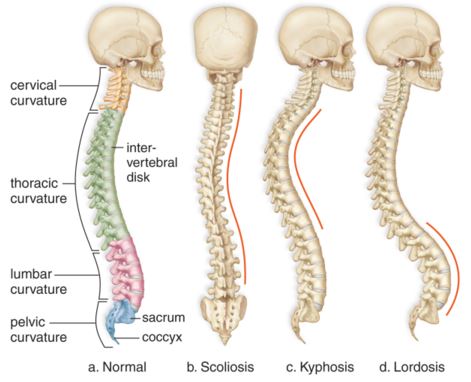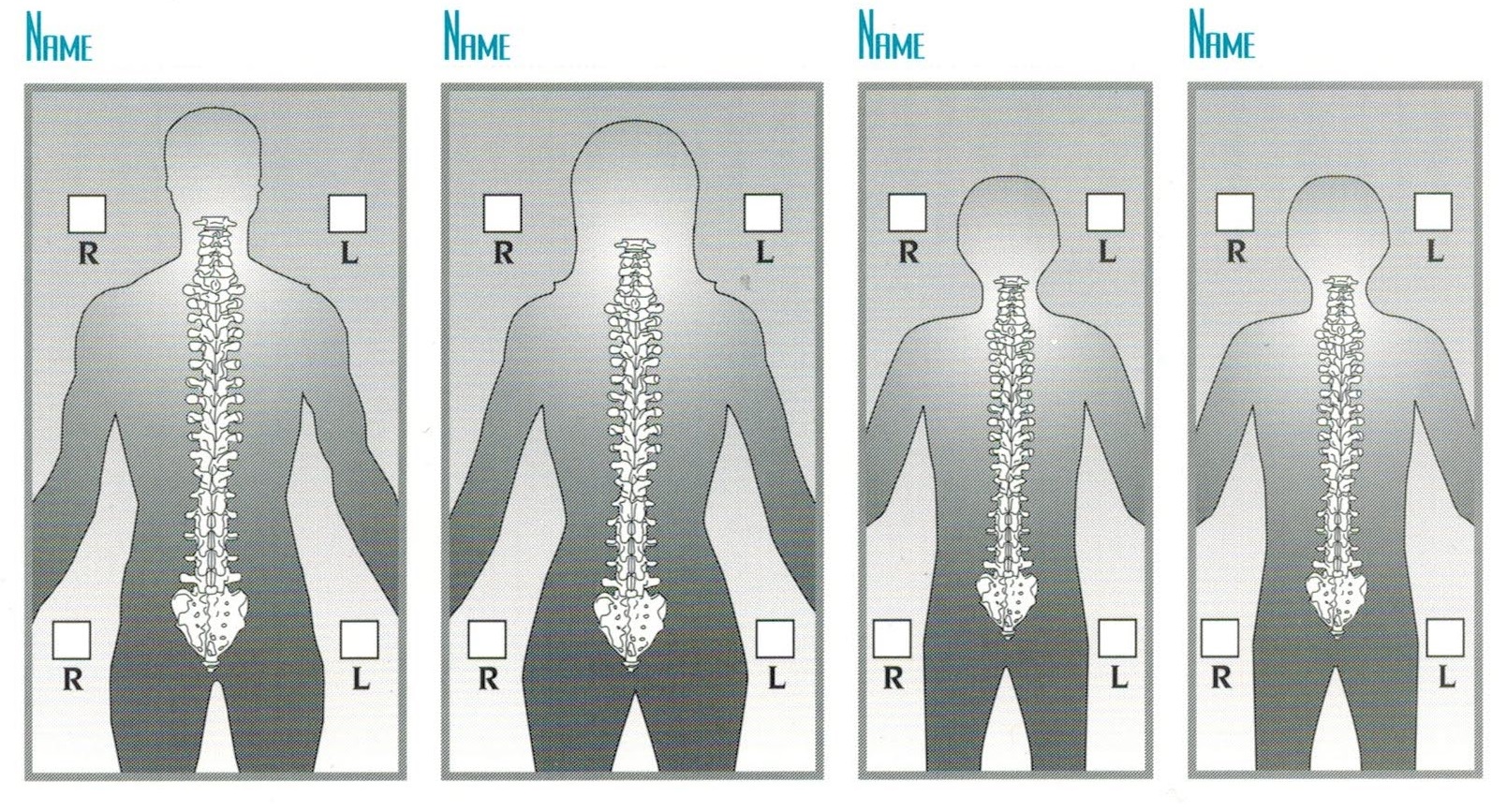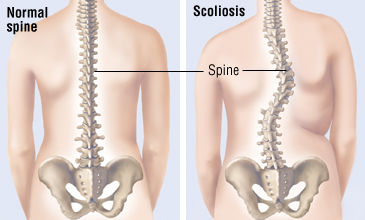
You or your loved one may have received a diagnosis and be wondering “What is scoliosis?” Scoliosis is not a disease like diabetes or arthritis. It is simply a term used to describe any abnormal, sideways twisted spine or backbone.
In this article, we’ll help you understand what scoliosis is, how to recognize its symptoms, and effective treatment options.
What is scoliosis?
Scoliosis is an abnormal curvature of the spine. It is actually natural and healthy for the spine to curve from front to back. This type of curve is only visible when viewed from the side. Kyphosis is a curve seen from the side in which the spine is bent forward. There is a normal kyphosis in the middle (thoracic) spine. Lordosis is a curve seen from the side in which the spine is bent backward. There is a normal lordosis in the upper (cervical) spine and the lower (lumbar) spine.
Scoliosis is a sideways curvature of the spine. These curves can be seen when the spine is viewed from the front or back. In most cases of scoliosis the bones of the spine twist on each other, forming a “C curve” or an “S curve” shape in the spine. It may or may not be noticeable to others.
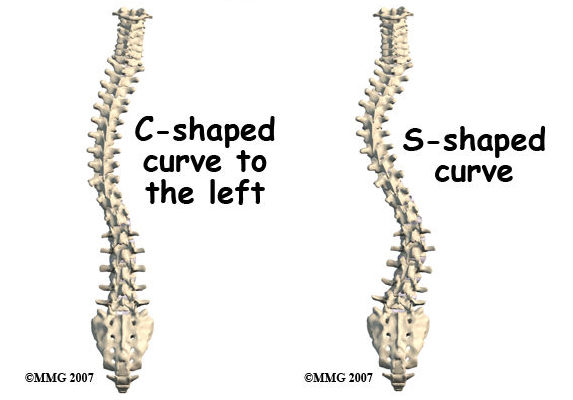
Doctors classify curves as:
- Nonstructural scoliosis: the spine is structurally normal and the curvature is temporary. A typical cause is muscle spasm causing temporary postural changes.
- Structural scoliosis: the spine has a fixed curvature. The cause could be a disease, injury, infection, birth defect, or most commonly idiopathic (no known cause).
Read more about the different types of scoliosis >
What is the history of Scoliosis?
Hippocrates, the ancient Greek physician, first wrote of spine deformity in 460 B.C. Nearly 500 centuries later, in the second century A.D., Greek physician Galen introduced specific terms for normal and abnormal spinal curves, including the term Scoliosis, into medical terminology. The word scoliosis comes from a Greek word meaning crooked. The term scoliosis refers to a crooked back or crooked spine. Keep in mind that curves are a completely normal feature of the spine when looking from the side, but the spine should appear straight when looking from the front.
In 1920, a report from the United States Army estimated around 10% of American World War I draftees had postural deformities. As a result, the US Children’s Bureau, US Department of Labor, and US Public Health Service all began to sponsor research and publish literature in an effort to improve Americans’ posture. The Metropolitan Life Insurance Company also required all of its applicants to undergo posture screening and created promotional literature such as The Importance of Posture (1927), Posture From the Ground Up (1939), and Standing Up to Life (1950).
What are the signs of scoliosis?
The most noticeable signs of scoliosis are physical asymmetries caused by spinal curvature, including:
- Shoulders are different heights or one shoulder blade sticks out
- Head not centered on body
- Hips are different heights or one hip sticks out
- One side of rib cage sticks out
- When bending forward, sides of back are different heights
- Ear not aligned with shoulder (when viewed from the side)
- Body leaning to one side
- One leg appears shorter
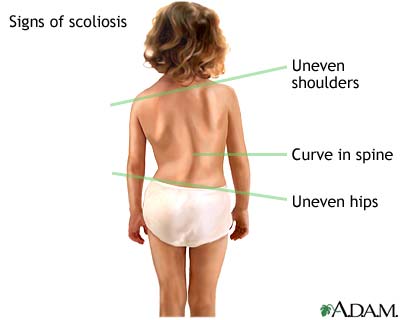
Scoliosis is often first noticed by a friend or family member. Changes to the spine occur gradually and do always cause pain, so it may go unnoticed by the individual. Scoliosis also commonly detected during a routine school screening examination. During this test the doctor or school nurse performs the Adam’s Forward Bend Test, in which the child bends forward as if touching their toes.
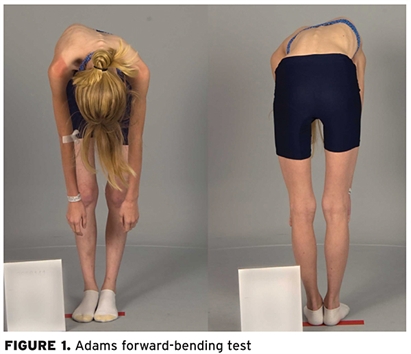
Once signs of scoliosis are detected, a proper diagnosis should be made by a doctor who specializes in condition. Physicians use medical and family history, physical exam, when checking a person for scoliosis. An x ray of the spine will confirm if a person has scoliosis. The scoliosis x ray lets the doctor measure the curve in degrees and see its location, shape, and pattern.
What are the symptoms of scoliosis?
The most common symptoms of scoliosis felt by patients include:
- Pain (typically, headaches and mid and/or lower back pain)
- General tiredness and fatigue from postural strain
- Reduced or restricted breathing (in cases of severe scoliosis)
In many cases, scoliotic curves will not cause pain. In a significant percentage of patients any pain associated with their scoliosis will get worse as they age. Scoliosis treatment is always designed to alleviate pain first (if any pain is present), then stop curve progression, reduce curve size and then stabilize the curve corrections.
Read more about scoliosis pain >
How is scoliosis diagnosed?
Doctors confirm scoliosis through an x-ray, spinal radiograph, CT scan or MRI.
If you suspect that you or your family member has scoliosis, there is a simple at-home scoliosis exam you can conduct. This scoliosis exam is not meant to diagnose scoliosis, but to check for visible postural signs that may indicate scoliosis. A full exam must be conducted by a scoliosis specialist to properly diagnose scoliosis.
INSTRUCTIONS:
Click on the image of the posture chart below and print the chart to record findings.
Participant stand with feet shoulder width apart and toes parallel then close your eyes and nod back and forth twice bringing head back to middle. Keep eyes closed for ten seconds while observer checks shoulder and hip levels.
Observer stand facing participant, and lightly place index fingers on participant’s shoulders, noting which shoulder is higher. Then place index fingers on top of participant’s hips and note which hip is higher. Place a check in the appropriate box on the posture chart below to indicate high shoulder and high hip.
**Important: If one of these test areas is positive, there is a likelihood that Scoliosis may exist but can only be confirmed with proper exam.
What causes scoliosis?
The causes of scoliosis or the most mart remain a mystery because in most people, there is no known cause for scoliosis. This is known as idiopathic scoliosis.
Idiopathic scoliosis is the most common type of scoliosis seen in children. Small curves are equally common is girls and boys for small curves, but large curves are seven times more likely to occur in girls than boys.
Scoliosis can present in people of all ages. It can be found in very young children from the time of standing to walk, but it is most common in those over 10 years of age. Studies have shown that 4 out of every 100 people have some form of scoliosis.
Scoliosis can run in families which has led researchers to conclude there is a strong genetic component to the origins of most scoliosis. A child who has a parent, brother, or sister with idiopathic scoliosis should be regularly screened for scoliosis.
Read more about scoliosis and genetics >
How is scoliosis treated?
There are a variety of scoliosis treatments, including:
- Watching and waiting: This is often the first option suggested by orthopedists, particularly in cases where they are not aware of non-surgical methods to stabilize and correct scoliosis. Patients may be told to wait until the curve gets worse before taking any action.
- Scoliosis bracing: Scoliosis braces, such as the TLSO or “Boston” brace are frequently suggested as a way to stabilize or reduce the progression of the curve.
- Scoliosis surgery: Once the curve gets above 40 degrees (cobb angle), orthopedists generally recommend surgery. The most common type of orthopedic surgery is fusion, which involves permanently joining two or more vertebrae into a single section of spine that is no longer capable or curving (or moving).
- Scoliosis exercises: There are a variety of scoliosis specific exercise programs available and significant advances have been made over the last 10 years. Exercise programs offer a non-surgical and proactive alternative that can stabilize and reverse scoliosis curves. The most well known programs include CLEAR, Schroth, and Yoga for Scoliosis.
Read more about scoliosis treatments >
At Strauss Scoliosis Correction, we offer proactive non-surgical scoliosis treatment. We take a combined approach using the latest advances in scoliosis exercises and bracing. By doing so we have achieved excellent results reducing pain, improving posture, and reversing scoliosis curvature in both children and adults.
